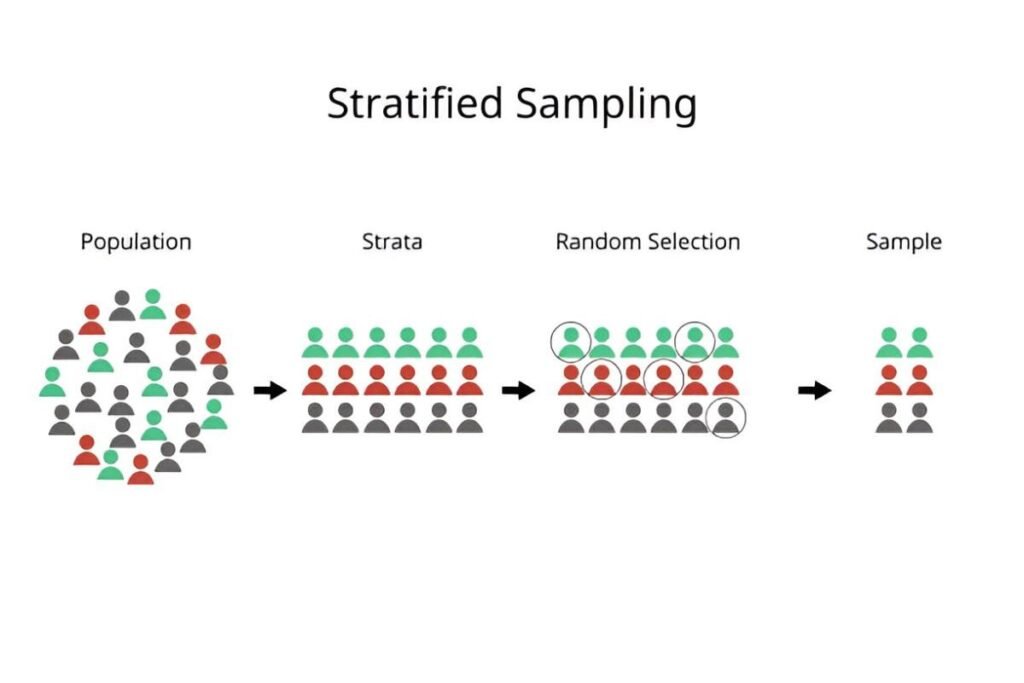Sampling is an essential technique in the field of statistics, especially when it comes to making data-driven decisions. Whether you’re conducting market research, estimating the population parameters, or analyzing survey results, the importance of selecting a representative sample cannot be overstated. Among the various methods used for sampling, systematic sampling stands out as an effective and straightforward approach. In this article, I’ll break down the concept of systematic sampling, explain how it works, and explore its applications. I’ll provide real-world examples, step-by-step calculations, and practical insights to help you fully grasp this technique.
Table of Contents
What is Systematic Sampling?
Systematic sampling is a type of probability sampling method where elements from a larger population are selected at regular intervals. This interval, known as the sampling interval, is determined by dividing the total population size by the desired sample size. The main advantage of systematic sampling is that it simplifies the process of selecting a sample, especially when the population is large, and it eliminates the need for random sampling of every individual.
For example, imagine you need to select a sample of 100 people from a population of 1,000. Using systematic sampling, you would select every 10th person (1,000 divided by 100) from the population list. This approach ensures that the sample is spread across the entire population, which helps in minimizing bias.
How Systematic Sampling Works
Here’s how systematic sampling typically works:
- Step 1: Define the Population and Sample Size: The first step in systematic sampling is to determine the population size and the sample size you need. This gives you the number of items to choose from and helps in calculating the sampling interval.
- Step 2: Calculate the Sampling Interval: The sampling interval, denoted as k, is the distance between consecutive elements in the sample. It’s calculated as the ratio of the population size N to the desired sample size n:
For example, if the population size is 1,000 and you need a sample size of 100, the sampling interval would be:
k = \frac{1000}{100} = 10So, you would select every 10th item.
Step 3: Randomly Select the First Element: The key to systematic sampling is that the first element is chosen randomly. This random selection ensures that the sample remains unbiased. Once the first element is selected, subsequent elements are chosen based on the established interval.
Step 4: Select the Remaining Elements: After the first element is selected, you continue selecting subsequent elements at regular intervals. In the example of every 10th person, after selecting the first person, you would select the 10th person, then the 20th person, the 30th, and so on until you’ve selected the desired sample size.
Step 5: Analyze the Sample: Once the sample is selected, it’s time to perform your analysis. The sample should be representative of the population if the sampling method has been correctly executed.
Example of Systematic Sampling
Let’s take a concrete example to further understand systematic sampling. Suppose you’re conducting a survey on customer satisfaction, and you have a list of 500 customers. You want to select a sample of 50 customers to participate in the survey.
- Step 1: Determine the Sampling Interval: The population size is 500, and the sample size is 50. To calculate the sampling interval:
This means you will select every 10th customer from the list.
Step 2: Randomly Select the First Element: Suppose you randomly choose customer number 3 to be the first element in the sample.
Step 3: Select the Remaining Elements: After customer number 3, you will select every 10th customer. So, your sample will consist of customers numbered 3, 13, 23, 33, 43, and so on, until you have selected 50 customers.
Advantages of Systematic Sampling
- Simplicity and Ease of Implementation: Systematic sampling is straightforward to implement, especially when you have a large population. Unlike simple random sampling, you don’t need to randomly select every individual. Instead, you can select elements at fixed intervals, making it faster and easier to administer.
- Cost-Effective: Since systematic sampling reduces the need for random selection across the entire population, it is less time-consuming and more cost-effective. This makes it an excellent choice for large-scale surveys or studies.
- Representative Sample: If the population is homogeneous (i.e., the elements of the population do not vary significantly), systematic sampling tends to produce a representative sample. This is because the sample is spread evenly across the population, capturing the diversity without bias.
- Efficiency: The method ensures that the sample is selected in an organized manner, reducing the chances of human error and making it easier to apply across large datasets.
Disadvantages of Systematic Sampling
- Bias in Certain Populations: If the population has a hidden pattern that aligns with the sampling interval, systematic sampling can introduce bias. For instance, if every 10th person on the list has a particular characteristic (e.g., customers who purchase more expensive items), the sample may not accurately represent the population as a whole. In such cases, systematic sampling may overestimate or underestimate certain characteristics.
- Dependency on the Order of the Population: The method assumes that the order of the population does not introduce bias. If the population list is arranged in a way that affects the selection (such as by age, income, or geographical location), the sample may not be fully representative.
- Not Suitable for Highly Heterogeneous Populations: Systematic sampling works best when the population is relatively homogeneous. If there is significant variation within the population, systematic sampling may not capture the diversity needed for an accurate sample.
Comparison of Systematic Sampling vs. Simple Random Sampling
| Feature | Systematic Sampling | Simple Random Sampling |
|---|---|---|
| Method of Selection | Select elements at fixed intervals | Every individual has an equal chance |
| Complexity | Easier to implement | More time-consuming |
| Risk of Bias | Possible if there is a hidden pattern | Minimal, as all individuals are chosen randomly |
| Population Size | Effective for large populations | Suitable for smaller populations |
| Efficiency | More efficient for large samples | Can be inefficient for large populations |
| Cost | Generally cheaper | Can be costly due to randomness |
Applications of Systematic Sampling
- Market Research: In market research, businesses often use systematic sampling to select customers for surveys. If a company has a list of 10,000 customers and wants to survey 1,000 of them, systematic sampling can simplify the process and reduce costs, making it a go-to choice for large-scale research.
- Quality Control: Systematic sampling is commonly used in quality control processes. For example, a factory may use systematic sampling to inspect every 10th product off the production line to ensure that products meet quality standards.
- Public Opinion Polling: Systematic sampling is also used in political surveys and public opinion polling. Instead of contacting every individual, pollsters select every nth person from a list of registered voters to ensure that the sample is representative of the entire population.
- Epidemiological Studies: In public health studies, systematic sampling is often used to select a sample of patients or individuals for surveys, ensuring that the study can be completed quickly and efficiently without sacrificing representativeness.
When to Use Systematic Sampling
Systematic sampling is particularly useful in the following situations:
- When the population is large, and simple random sampling would be too time-consuming or expensive.
- When you have a well-organized list of the population and can easily select elements at regular intervals.
- When the population is relatively homogeneous, meaning there are no significant patterns or cycles that could lead to bias.
When Not to Use Systematic Sampling
While systematic sampling is often effective, there are instances where it may not be the best choice:
- When there is a known pattern or cycle in the population that could result in biased selection.
- If the population is highly heterogeneous or diverse, making it difficult to ensure that a sample selected at regular intervals is representative.
- When randomization is essential to eliminate all forms of bias.
Conclusion
Systematic sampling is an effective, cost-efficient method for selecting a sample from a large population. By choosing elements at fixed intervals, it offers a simple and practical approach that works well when the population is homogeneous and free from hidden patterns. However, it is essential to consider the potential for bias, especially if the population list has an underlying structure that could impact the sampling process. With a proper understanding of its advantages and limitations, systematic sampling can be an invaluable tool in a statistician’s or researcher’s toolkit.





